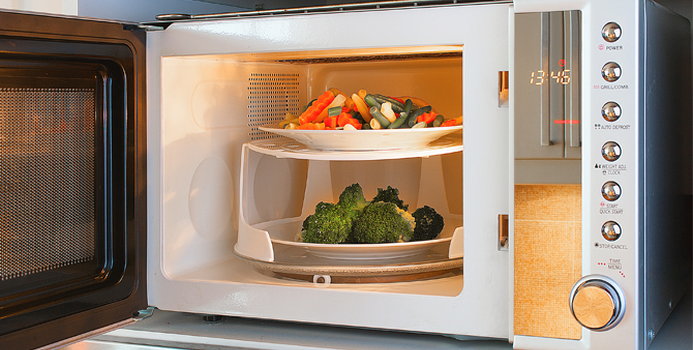It is important that food safety is observed whenever you thaw frozen foods. The freezer serves as an essential food storage feature in the home. Food that is not intended for immediate consumption can be stored for later use. However, proper procedures must be followed when food is retrieved from the freezer. Many food borne diseases are associated with improperly thawed foods. Below are some guidelines on how foods should be thawed.
Refrigerator
Frozen food can be kept in the refrigerator and allowed to thaw. It is best to set the refrigerator temperature at 400F. This is regarded as "safe" because it does not allow pathogens to build-up. The food should be placed in a drip-proof container and kept at the bottom of the refrigerator. This helps to prevent cross-contamination. Adequate refrigeration space facilitates the process. Large items, such as turkey, can take up to 5 days. Allow 4 hours for each pound of poultry and 9 hours for each pound of meat to defrost. Raw meat, poultry, stews, soups, casseroles, vegetables, fruit, breads, cakes and pastries can be defrosted in this way. Seafood can defrost overnight.
Cold Water
You must clean the sink well before you defrost. This helps to prevent cross-contamination. Place the food in a watertight container and submerge in cold water. Water must be changed every 30 minutes until food has completely defrosted. Food defrosted this way takes less time than if thawed in the refrigerator. This method is suitable for small portions of meat and poultry. Time may range from 30 minutes to a couple of hours. You can defrost seafood with cold water. However, the food wrap must be maintained, otherwise color and flavor diminishes. You can also defrost fruits and vegetables with cold water.
Microwave
This is the quickest defrost method. However, food may begin to cook in the process. It also creates hot spots because the food may heat unevenly. Use the "Defrost" setting to thaw. Remove food wraps from the items before you defrost. For better heat circulation, it is best to leave at least 2 inches between the food and microwave sides. Turn the food regularly so that it heats evenly. Foods you can defrost in the microwave include stews, soups, casseroles and pasta dishes.
Foods must be completely defrosted before you cook. However, you needn't thaw frozen vegetables before you cook. Generally, it is best to cook food immediately once it has thawed. The exception to this is food thawed in a refrigerator. Meat can be stored in the refrigerator for up to 4 days; ground beef and poultry for no more than 2 days. Thawed seafood should be cooked within one day. It is best not to re-freeze food that has been thawed. The quality of the food reduces if refrozen. The risk of contamination and illness also increases. Do not allow food to thaw at room temperature. Pathogens easily develop in temperatures that range between 400F and 1400F. This increases the likelihood of food borne diseases. However, exceptions include breads, muffins, cakes and cookies.



